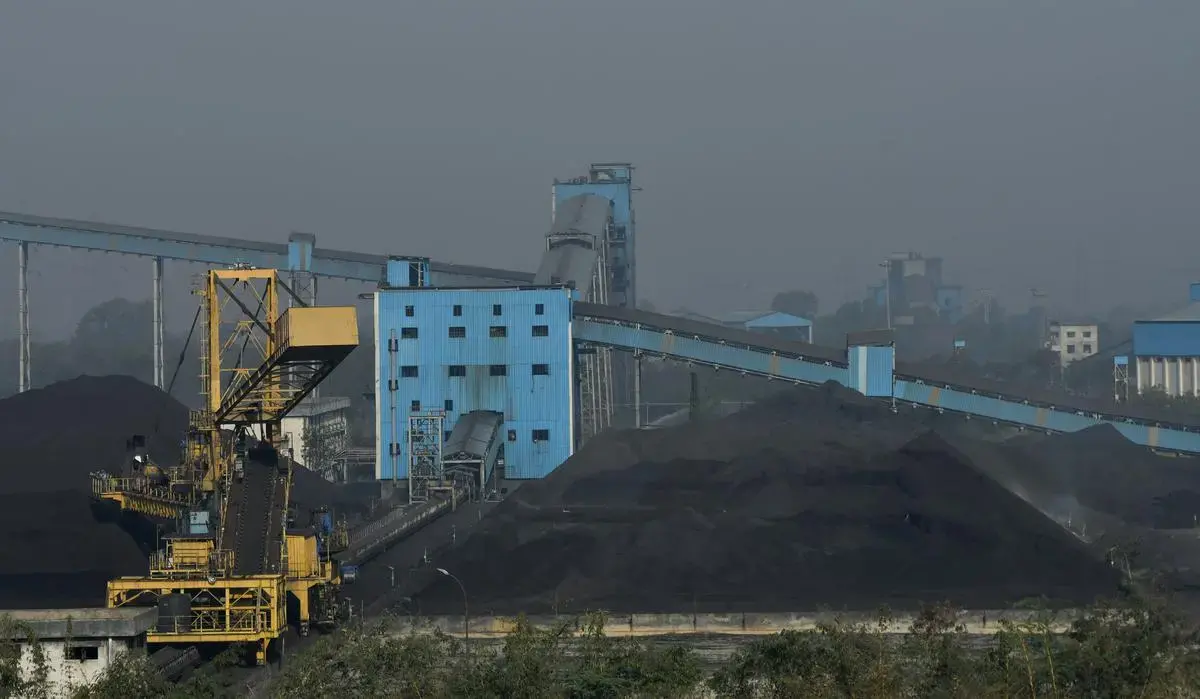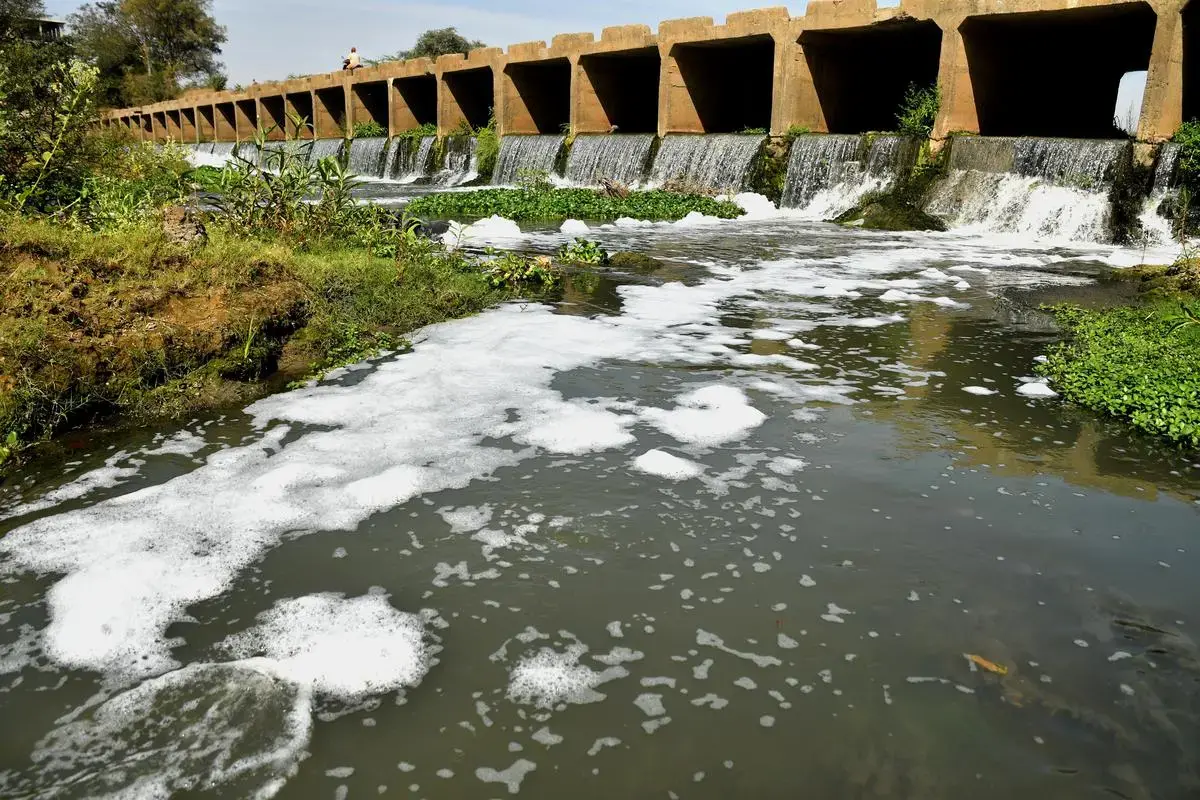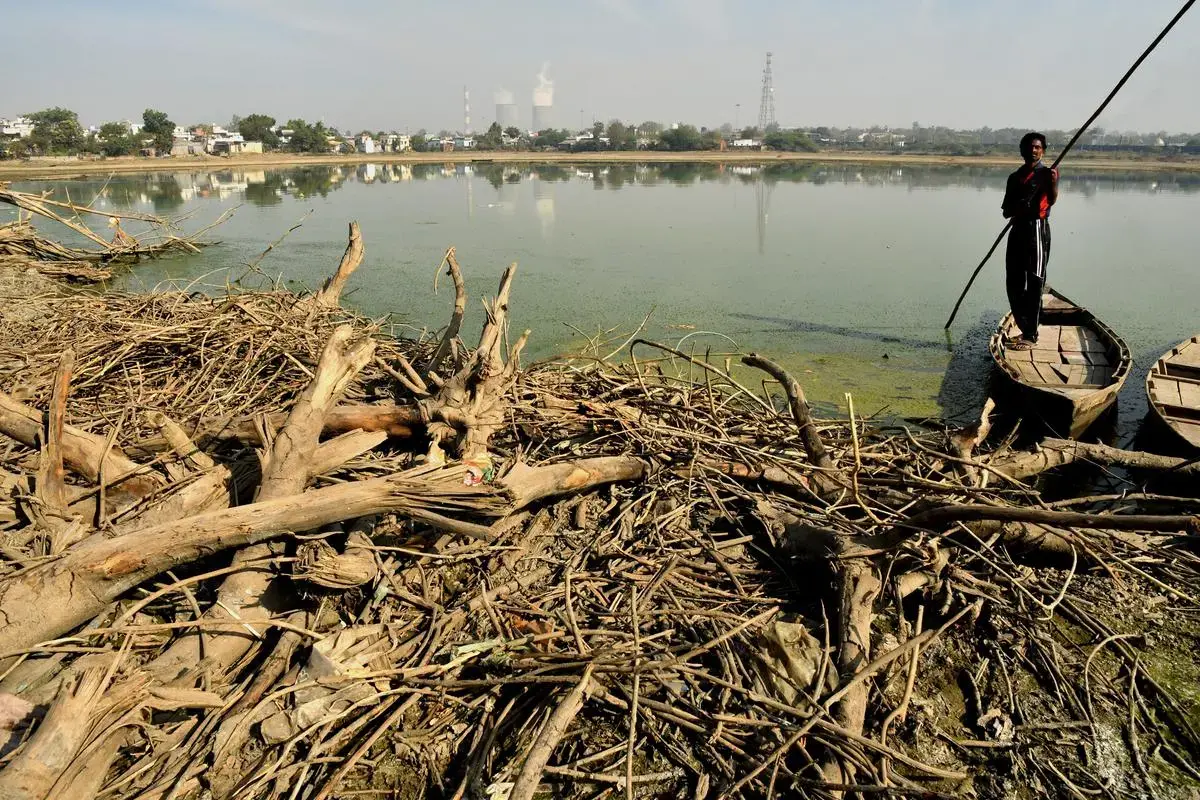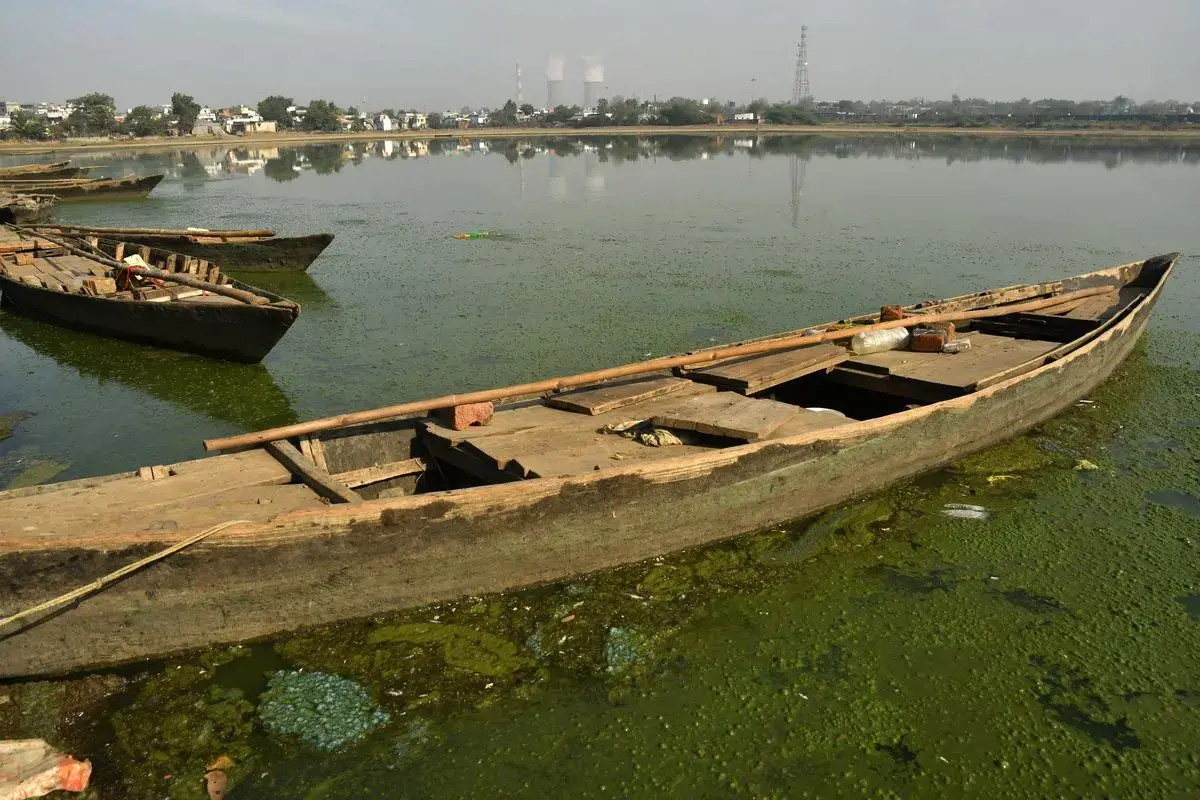Despite the Chandrapur Super Thermal Power Station facing several allegations of flouting environmental norms and of knowingly and willingly damaging its immediate environment, it has barely faced any action. Mrinali Dhembla reports from one of India’s most polluted cities on the dangers of slurry leaks and untreated coal waste and the effects of toxic substances on the population
Every day, when 10-year-old Madhav Mundhada comes back from school tired, he takes at least 45 minutes to finish his meal. He is forced to eat slowly. “Sometimes food triggers his asthma attack,” says Dr. Gopal Mundhada, his grandfather, who is a paediatrician and former president of the Chandrapur chapter of the Indian Medical Association.
Madhav has had severe asthma since he was two or three years old. Mundhada says he is convinced it is because of the air pollution in the neighbourhood.
The Mundhadas are an intergenerational household a few stones’ throw away from the coal-fired Chandrapur Super Thermal Power Station (CSTPS) in Maharashtra’s Chandrapur district. A hulking seven-unit facility with a capacity of 2,920 MW, the plant has been billowing toxic substances for nearly 40 years. The air around the CSTPS smells charred and pungent. It reeks of the smell of continuous combustion of petrol or coal. The radius of the plant is bespattered with trees, and inhabited by the employees of CSTPS, who claim that it is not uncommon to spot a tiger on the premises of the plant.
Chandrapur city is known as ‘India’s Black Gold City’ and is in the Vidarbha region, the coal-rich belt of Maharashtra. It is also one of the most polluted cities in India. The city is an industrial area, home to cement, explosives, paper, and textile factories, in addition to mines.
The CSTPS plant alone releases 7,100 metric tonnes — almost the weight of 18 jumbo jets — of fly ash, a fine particulate by-product of coal combustion that is known to be carcinogenic. It also generates 2,900 metric tonnes of bottom ash, the heavier coal waste that is non-combustible and needs to be stored safely to prevent it from percolating into the groundwater. Both these forms of coal waste are together known as coal ash.

In 2019, Chandrapur had a very high Comprehensive Environmental Pollution Index (CEPI) score of 76.41. The CEPI is a monitoring scale that assesses the overall environmental quality of industrial areas in India. When scientists installed faux lungs to measure air pollution in the city in November 2021, they turned sooty black in one week. The air became so toxic that the air quality index reached a dangerous 400 in January 2022.
Critically polluted
Mundhada’s son, daughter-in-law, and his wife Dr. Bharati Mundhada all suffer from asthma. Bharati says that she started having breathing troubles in 1989, a few years after she moved to Chandrapur following her marriage into the Mundhada family.
According to government stipulations, CSTPS, which is run by the Maharashtra State Power Generation Co. Ltd (MAHAGENCO), a public utility with the second-highest power generation capacity in India (in 2017), is required to install air quality monitoring units in different locations around the thermal plant. In January 2022, the sulphur dioxide (SO2) reading from a monitoring system installed at unit 8, a new unit commissioned in 2015, was found to be eight times higher than the standard limit. Nitrogen dioxide (NO2) emissions also often show similar deviant trends.
Several studies have shown the effects of this pollution. A June 2020 study showed that among street vendors, 32% of those surveyed by two researchers in Maharashtra had complained of respiratory tract infections. According to a report published in February 2022 by the Centre for Research on Energy and Clean Air (CREA), an independent organisation founded in Helsinki, the operation of units at CSTPS in 2020 could be linked to an estimated 85 premature deaths in Chandrapur and 62 in Nagpur, about 120 km to the north. The study also said that the effects of ambient air pollution from CSTPS resulted in various health illnesses, which led to 34,000 sick leave days in Chandrapur and 30,000 days in Nagpur. MAHAGENCO responded by serving a defamation notice to CREA. It dubbed the study “mischievous”, “baseless”, “false”, “misleading” and “unscientific.”

There are several complaints of respiratory issues in the area around the plant. “Children are falling sick because of pollution. If we go to a public hospital, they ask us to come in, give us medicines and an injection. That’s it,” says a resident of the city.
“Every family has a story,” says pulmonologist Dr. Saurabh Rajurkar, who runs a clinic close to the plant.
Key activists in Chandrapur, including Mundhada, who runs the non-profit Chandrapur Bachao Sangharsh Samiti, have filed a lawsuit against the State government demanding action. They say the CSTPS has been flouting environmental norms. Reports that the activists filed with the National Green Tribunal suggest that all seven operational units at CSTPS released SO2 beyond permitted limits and that one unit reported a higher concentration of nitrous oxides as well.
Plant officials deny these allegations. “All industries (in Chandrapur) are complying with industrial norms,” says Pankaj Sapate, chief engineer of the CSTPS plant.
Dangerous disasters
Around 40 km away from the plant is an ash pond that holds coal waste in the form of slurry. “All the bottom ash [2,900 metric tonnes that is produced daily] is dumped into the ash bund by the CSTPS. Then the ash leaks into rivers, nallahs and people’s agricultural land,” says Suresh Chopane, an activist in Chadrapur.
In September 2021, the Maharashtra Pollution Control Board (MPCB), which is responsible for overseeing CSTPS’ adherence to environmental norms, wrote in a letter to the electric utility saying it had found seven million metric tonnes per annum of ash dumped in the bund and the plant is storing ash in an unscientific manner.
In March last year, a pipe that carried fly ash slurry from the thermal plant to the ash pond reportedly leaked right over the Erai river, a lifeline for the people of Chandrapur. Sapate claims that the quantity of the leaked slurry was very little.

Ash was reportedly found along the river bed and accumulated in many places on the road next to the pipe. “There was no such thing witnessed,” he says.
Dangerous disasters such as the slurry leak are an all too common in India. There have been 76 such incidents reported in just the last decade, according to the Flyash Watch Group.
“The ash pond is a temporary storage unit,” says Sripad Dharmadhikar, a policy researcher at the Manthan Adhyayan Kendra, an organisation that studies various environmental issues such as water privatisation, inland waterways, coal and water, and water policy in India. The latest rules regarding coal ash stipulate that the rate of fly ash generation is supposed to meet the rate of utilisation, which means 100% of the fly ash being generated needs to be recycled. Fly ash utilisation is the process by which waste is recycled for reuse in cement, concrete, mineral filler for asphalt roads, etc. As per the rules, all coal power plants must reuse 100% of their fly ash within three years or face a fine of ₹1,000 per tonne. However, one in every two coal-based plants flouts these norms, according to a report by the Centre for Science and Environment.
In Koradi and Khaparkhera in Maharashtra, where there are two state-run plants of 2,400 MW and 1,340 MW capacity, respectively, Manthan examined the water quality and found that almost every water sample failed the safe Bureau of Indian Standards’ limits for drinking water. There were also heavy metals such as mercury, arsenic, and cadmium, which can cause cancers of the bladder and the liver. Coal ash slurry is rich in these elements as well.
Manthan suspects similar results with Chandrapur, where it undertook a similar water sampling survey in September 2022. The report is due to be published this year.
CSTPS’ groundwater monitoring report is not in the public domain. However, it shared its report for June 2022 with The Hindu, which reported that the contaminants’ concentrations in drinking water were within safety limits.
Despite a variety of problems, the CSTPS has always had a ‘consent to operate’ from the National Green Tribunal and the Pollution Control Board, and has never shut down due to environmental violations.
“I suggest you… go there [to the ash pond]. You will not find the ash there,” Sapate says.

In a letter dated March 2021, the MPCB wrote that CSTPS was knowingly and willingly damaging its immediate environment. Two other letters dated September and December 2021 used the same words to denounce the plant’s operations. But CSTPS hasn’t faced further action other than being asked to pay a fine of ₹5 crore for the slurry leak in March 2022.
The better way forward
India produces almost 180 million metric tonnes of fly ash every year and a significant fraction of it remains untreated and unrecycled. The Indian government has issued various notifications on fly ash utilisation, demanding beneficial reuse instead of all-out disposal; installation of flue gas desulphurisation (FGD) units; and safe disposal of fly ash. Yet, India has recycled only around half of its fly ash even as it generates more.
In 2020 alone, CSTPS emitted 4,724 tonnes of particulate matter, 1,03,010 tonnes of SO2 and 28,417 tonnes of NO2, according to a recent study by CREA. FGD is a system that can help cut SO2 emissions by up to 80-90% in some units. This way, “More than 1,300 lives could have been saved in 2020 if the CSTPS [had] installed FGD,” CREA’s report says.

“It is important to install FGD to meet the current environmental norms. It is compulsory by the authorities,” Sapate says. “We are planning to place FGD as per the guidelines of the Ministry of Environment, Forests and Climate Change.” Seven years since the nationwide announcement for the need of an FGD system, CSTPS still has no solid plan to install it. A September 2022 update said tendering for FGD systems is “in progress”.
As per the latest available data, CSTPS has only utilised 45% of its fly ash; the remaining 80 million tonnes — the weight of 1,500 Titanic ships — is stored in the ash bund. According to a Maharashtra State Pollution Control Board action plan, CSTPS was to have achieved 100% utilisation by 2014.
Dr. Mundhada says this battle isn’t just his own. It’s an arduous struggle to ensure that one of the largest state-run power plants in Maharashtra operates lawfully, keeping in mind the myriad ways in which its operations affect the lives of Chandrapur’s people. “ Yeh diye aur toofan ki ladayi hai (it’s a battle between a lamp and a storm),” he says.
Mrinali Dhembla is a freelance journalist. This story was reported with funding secured from the Pulitzer Center on Crisis Reporting.













